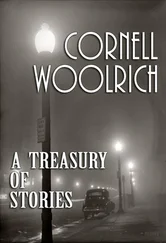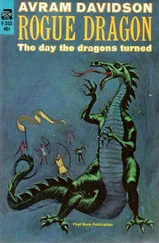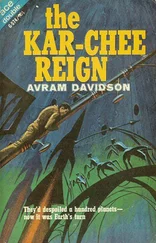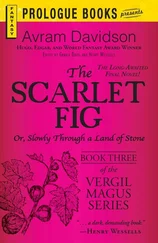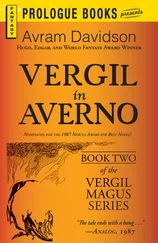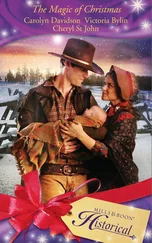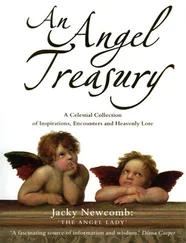There was, at the moment, a minor hitch. Old Mr. Godbody affected to be shaken by the recent revelation of scandal in the anthropological hierarchy. From this respectable group, whose likenesses were known to every school child, long since having replaced Major and Minor Prophets alike in prestige and esteem, from this jolly little club — judgment falling like a bolt of thunder — the Piltdown Man had been expelled for cheating at cards. If Piltdown Man was a fake, he demanded querulously, why not all the rest? Java Man, Peiping Man, Australopithecus tranvalensis — all bone-scraps, plaster of Paris, and wishful thinking? In vain, Turbyfil assured him that competent scholars had been leery of H. Piltdown for years; ugly old Mr. Godbody testily replied, “Then why didn’t you say so?” Having lost one faith in his youth, the textile print prince was reluctant to lose another in his old age. But Dr. Turbyfil trusted his patron’s doubt was only a passing phase. His chief anxiety, a well-modulated one, was whether Mr. Godbody’s health would carry him over the few weeks or months necessary to get past this crochet.
In sum, Dr. Turbyfil was about to reap the rewards of virtue and honest toil, and when he reflected on this (as he often did) it amused him to sing — a trifle off-key — a song from his childhood, called “Bringing in the Sheaves.” Prior to his coming to Holden, the museum — an architectural gem of the purest late Chester A. Arthur — had been headed by a senile, though deserving, Democrat, who had been washed into office on the high tide of the Free Silver movement. And the museum itself! Dr. Turbyfil found that every worthless collection of unsalable junk in the state made its way thither. Postage stamps of the sort sold by the pound on Nassau Street, stuffed and moldering opossums, tinted photographs of wall-eyed pioneers, hand-painted “china,” unclassified arrowheads by the gross, buttons from Confederate uniforms, legislative gavels, mounted fish, geological “specimens” collected by people with no faintest knowledge of geology, tomahawks — oh, there was no end to the stuff.
That is, there had been no end to the stuff until the appointment of Dr. Fred B. Turbyfil…the trash still continued to come in, of course: there was no tactful way of stopping that. There were still many people to whom it seemed, when Uncle Tatum died, that the natural thing to do with Uncle Tatum’s “collection” was to ship it to the Holden Museum. Dr. Turbyfil had developed his own technique of handling such shipments. He had then arranged — at night — in as many showcases as might be needed, prominently labeled with the donors’ names; then he had the works photographed. To the contributory family, a gracious letter of thanks. To their local newspaper, a copy of the letter. To both family and paper, a Manila envelope of glossy prints. And then, for Uncle Tatum’s musty nonsense, tomahawks and all, the blessed oblivion of the cellars. (“We are recataloguing,” Dr. T. explained to the few inquirers.)
(But you couldn’t put Dr. Sanzmann in the cellar, could you? )
The letters of thanks were worded in phrases as unchanging as a Buddhist litany. They extolled the career of the dead pioneer, gave proper credit to the sense of public interest displayed by his heirs, and hoped that their concern for the Important Work of the Holden Museum would be shared by others. The liturgical response was seldom wanting, and took the form of a check, the amount of which was, as Dr. Turbyfil had lightly pointed out, Deductable From Income Tax. Om mani padme hum!
Ah, that was a day when they opened the Hall of Practical Science! The governor, the senior U.S. senator, university presidents, hillbilly singers, and other public figures — scores of them. There was a real oil pump that pumped real oil, and a genuine cotton gin that ginned genuine cotton. It was the machines which set the tone for the exhibits, but Dr. Turbyfil was proudest of the huge photographic montages, mounted to give a three-dimensional effect. There was one of Mr. Opie Slawson (Slawson Oil and Natural Gas) pointing to the oil pool on the cross section (in natural color) of a typical oiliferous area. There was another of Mr. Purvie Smith (P.S. Cotton and P.S. Food Products) watching his prize steers nuzzle cottonseed cake while replicas of the lean kine of Egypt stared hungrily at a clump of grass. There were others. And how the checks had come in! And continued to come!
( But Doktor Philosoph. Ludwig Sanzmann was coming, too.)
Months of preparation had gone into what was, after all, really just a prestige exhibit — the display of Bouche Perce Indian life before the Coming of the White Man. A huge semi-circular backdrop gave the illusion of distance. Buffalo grazed conveniently not too far away, and wild horses galloped along a hill crest. The primitive Bouche Perces ground corn, played games, scraped hides, wove weavings, put on war paint, rocked papooses, and received the non-socialized ministrations of the tribal medicine man. There were authentic wickiups, simulated campfires, and a bona fide buffalo skull.
The Bouche Perces (who were “Oil Indians”) drove up in their Packards from miles around, and received such a boost in tribal pride that they shortly afterward filed suit for thirty million dollars against the Federal Government. (They were finally awarded a judgment of four million, most of which the Government deducted to cover the expense of itself in allowing the Bouche Perces to be swindled, cheated, and starved for the three generations preceding the discovery of oil.) The Tribal Council voted to make the museum the custodian of its ceremonial regalia, and Dr. Turbyfil received several honorary degrees and was made a member of learned societies. The only opposition to his efforts on behalf of American Indian culture came from the oldest (and only surviving pure-blood) Bouche Perce. Her name was Aunt Sally Weatherall, she was a prominent member of the Baptist Ladies Auxiliary, and she steadfastly refused his offer to be photographed with her in front of all them Heathen Reliets and Nekked Women. She also added that if her old granddaddy had ever caught any Bouche Perce a-weaving Navaho blankets like that huzzy in the pitcher, he’d of slit her wizzand.
The trouble was that Aunt Sally Weatherall wouldn’t come, and Dr. Sanzmann would. Any minute now.
Dr. Turbyfil had been expecting this visit for years. Dr. Sanzmann had mentioned it at every meeting. Sometimes his tones were bright and arch, sometimes they were gloomy and foreboding and sometimes they were flat and brusque.
The two men had come to Holden within a few months of one another, Dr. Turbyfil from his two-year stay at the Museum of Natural Philosophy in Boston, and Professor Sanzmann from a meager living translating in New York, whither he had come as an exile from his native country. Sanzmann was politically quite pure, with no taint of either far right or near left; was, in fact, a Goethe scholar — and what can be purer than a Goethe scholar? He had a post at the local denominational university: Professor of Germanic and Oriental Languages, neatly skipping the questionable Slavs. Dr. Turbyfil was not an ungenerous man, and he was quite content to see Professor Sanzmann enjoy the full measure of linguistic success.
But Dr. Philosoph. Ludwig Sanzmann was also an amateur anthropologist, paleontologist, and general antiquarian: and this was enough to chill the blood of any museum director or even curator. Such amateurs are occupational hazards. They bring one smelly cow bone, and do it with a proud air of expectancy, fully anticipating the pronouncement of a new species of megatherium or brontosaurus. Although Dr. Sanzmann had not — so far — done that , he often put Turbyfil in mind of the verse,
Читать дальше

